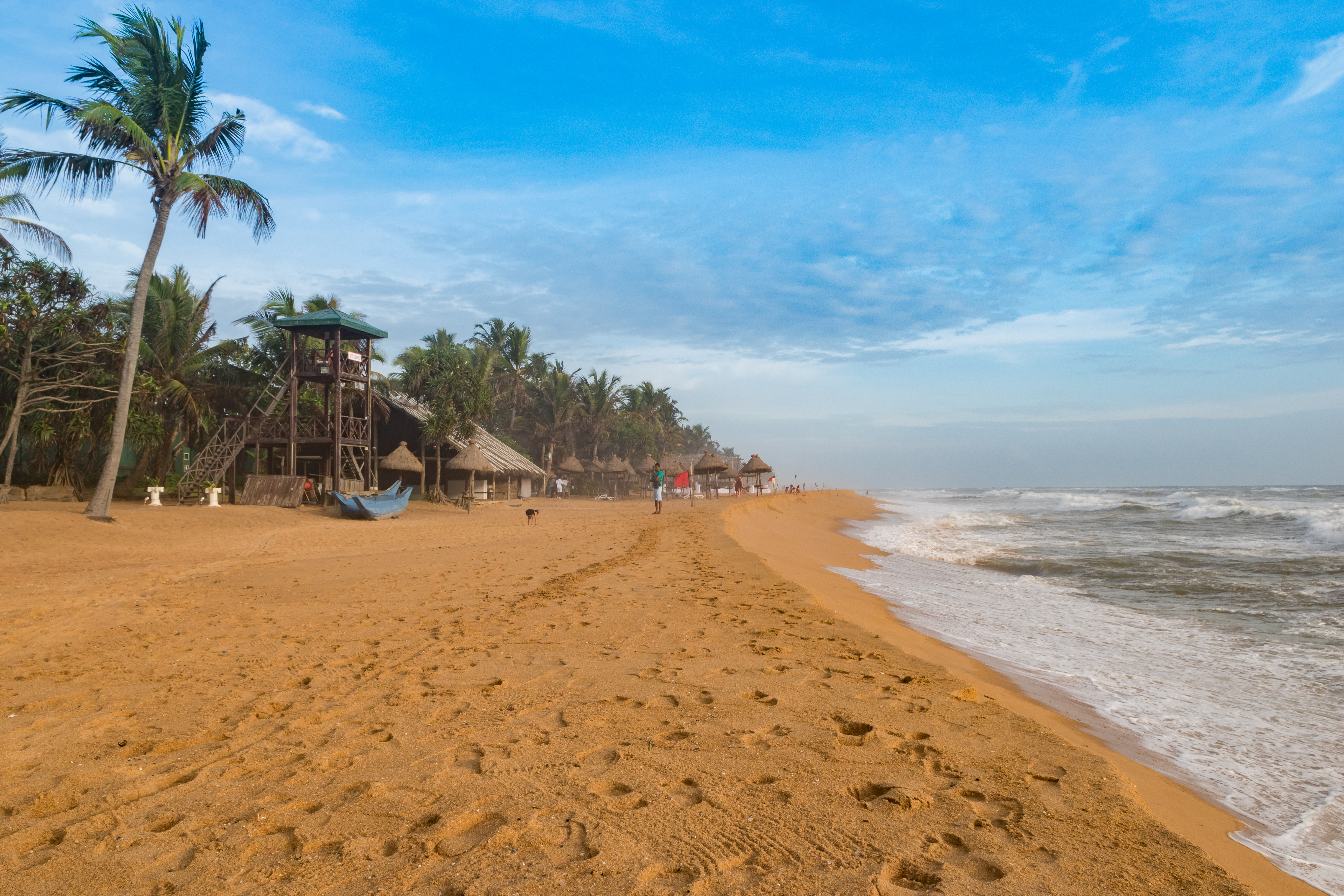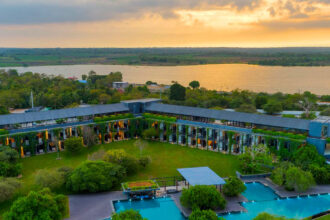From November to April every year, the beaches on the west coast of Sri Lanka are the best.
1. Negombo
The closest beach to the airport, a mere 5km distant. Some quiet stretches of the beach are maintained by the tourist hotels, while other parts are busy with fishermen with their boats and nets.
Negombo contains a long, sandy beach that is very wide in places, especially towards the northern end. The sea, however, is not suitable for bathing The after-beach bars and restaurants are fun.
Diving is possible on outer reefs from November – April. The closer dive sites are about 5 to 8 Km away from the shore. For experienced divers, a 30-minute boat ride 22km is a “third” reef
Winter Season: November – April The beaches are at their best at this time with fine weather and calm seas.
Summer Season: May – October
Negombo becomes a lot quieter but is still popular as summer holidaymakers use the resort as a stopover for a day or two on arrival or prior to departure from the island.
2. Mount Lavinia
The closest dedicated beach strip to Colombo is 12km south of the city. Overlooked by the Mount Lavinia Hotel, this is where locals do their thing – sunrise joggers and families taking a stroll at sunset, with all-day action for the beach-loving young at heart.
Outside a hotel, it’s hard to find breakfast until 9.00
If you’re just wading and building sandcastles Mount Beach is fine but swimming is not recommended and it’s not a surfing spot.3.
3. Kalutara
Kalutara’s prominent landmark is the shining white stupa of the historic Kalutara Bodhiya south of the Kalu Ganga (river). Near the northern bank, the Calido Beach adorns a thin strip of land that runs between the river and the Indian Ocean.
South of Kalutara, the beaches are long and straight with lots of coconut palms and a thickly populated coastline of fishing villages and market towns.
Winter Season: November – April: The beaches are at their best at this time with fine weather and calm seas.
Summer Season: May – October, Offseason, slightly rough sea. Possible rainfall.
Limited watersports are available on the huge lagoon created by the estuary of the Kalu Ganga River. Canoeing is a popular activity.
4. Moragalla
Moragalla has a beautiful coral reef running parallel to the main Colombo- Galle A2 coastal road. This has created many pools of warm water for safe bathing; the area is popular with local tourists who stop their vehicles for lunch and a swim.
5. Beruwala
Considered the first dedicated beach resort town along the coastal belt this was originally a fishing and trading village known as Barberyn where Arab traders of ancient days would use its natural harbour. There are several hotels along its stretch with swimming pools.
From November to April, the near-shore Barberyn Reef (to the south of the town) protects the beaches allowing shallow seas and good conditions for wading and safe sea swimming, especially for kids
6. Bentota
Located south of the bustling coastal town of Aluthgama and the broad Bentota river, the beach is famous for its seaside resorts set under an endless canopy of palm trees. The watersports capital of Sri Lanka, the golden sandy beach seems to stretch for miles.
For beginners at watersports, such as water-skiing, jet-skiing, windsurfing, sailing, rowing and canoeing, there are skilled instructors available to help you enjoy those popular activities.
For experienced divers, there are 20m dive sites accessible by boat about 30 minutes away from the shore.
Induruwa, Kosgoda and Ahungalla are coastal towns to the south of Bentota. There are turtle hatcheries along this coast. At Induruwa, there is a natural sea swimming pool protected by rocks, much favoured by Sri Lankans at weekends and on Poya Days.
Winter Season: November – April
The beaches are at their best at this time with fine weather and calm seas.
Summer Season: May – October
The sea becomes slightly rough. Some rainfall. Bentota, however, stays very popular as summer holidaymakers and family-friendly atmosphere.
7. Hikkaduwa
Hikkaduwa, 97km south of Colombo, is renowned for its after-beach activities with dozens of small cafés, bars and seafood restaurants as well as lively hotels and guesthouses to suit all budgets. The sandy beach is not as broad as Bentota’s and is structured in coves, popular with the young at heart to explore during the day (there are glass-bottom boats for viewing the coral) and to party at night. It’s also popular with surfers.
The northern part is protected by a near-shore reef with an exquisitely curved bay that boats can anchor in. You can get some easy snorkelling by the beach and the waves are usually rather calm.
Hikkaduwa is a favourite destination with international surfers. There are no very large waves but instead accommodating breaks that seldom become frightening. That is why beginners, who need to feel safe in order to progress with confidence, get on so well at Hikkaduwa.
The Coral Sanctuary at Hikkaduwa is close inshore just off the main bay. It is a shallow body of water, not more than 5m deep, although the reef has been ravaged over the years. You can dive, swim and snorkel with parrotfish, barracuda and green turtles
Winter Season: November – April
The beaches are at their best at this time with fine weather and calm seas. There are many beach parties especially at weekends as the ‘Colombo crowd’ arrive en-masse to party the night away on the southern beaches.
Summer Season: May – October
During the offseason, Hikkaduwa experiences a great downturn in the number of visitors as the surfers move to Arugam Bay on the East Coast. Snorkelling and diving operators also do likewise and move to resorts such as Nilaveli and Pasikudah.
Gurus’s tip
Unless that’s what you’re looking for, beware of beach boys who will approach you and try to strike up a conversation. They seem friendly enough but you can bet they have a plan for extracting money from you somehow. If a beach boy offers to organise a tour for you, and you like the chap, look into his proposal thoroughly, inspect the van, meet the driver, and agree the total cost of the tour in advance.
Never attempt to swim where there are red warning flags flying. The seas can be treacherous with strong, and unexpected currents.
Subscribe to our newsletter to get our newest articles instantly!










